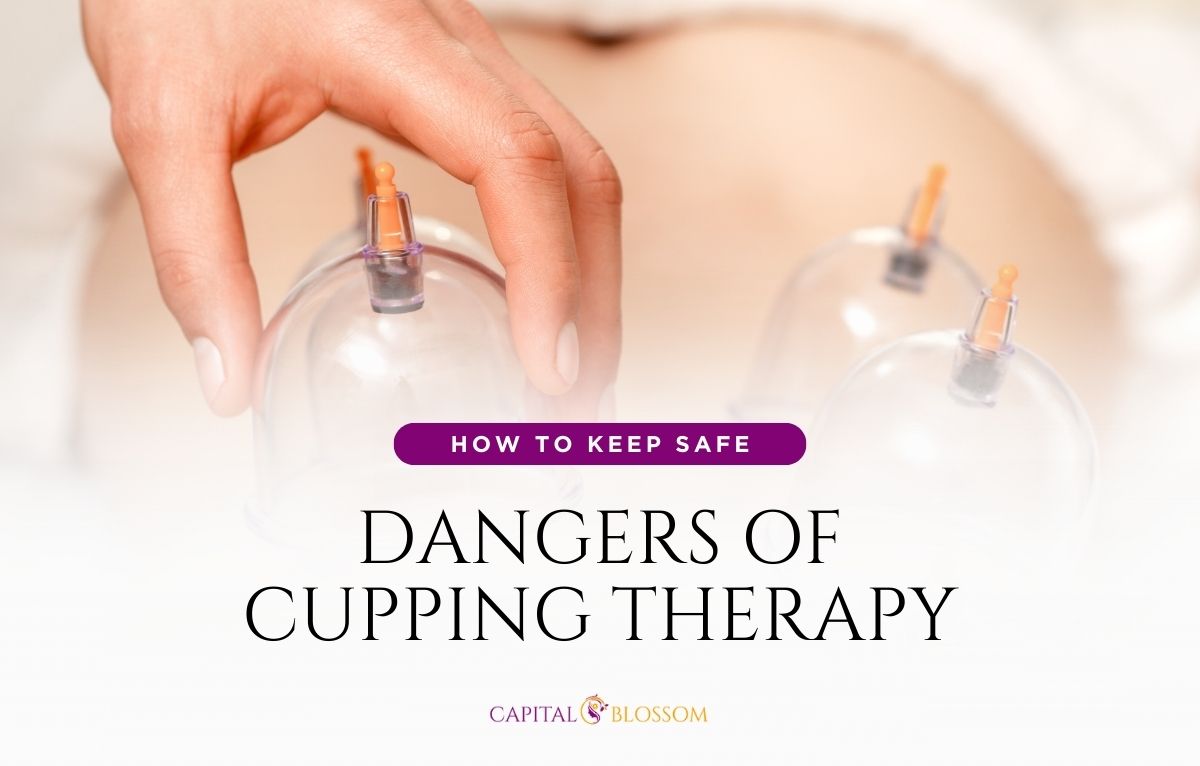
Hidden Dangers of Cupping Therapy and How to Stay Safe
Many people swear by its benefits, claiming it helps with muscle pain, circulation, and even stress relief.
However, as with any treatment, things can go wrong—sometimes dangerously so.
From severe burns to life-threatening infections, cupping therapy has risks that are often overlooked.
Some people experience extreme bruising, nerve damage, or skin infections due to poor technique or unhygienic practices.
In rare cases, improper cupping can even lead to permanent scarring or tissue damage.
While cupping is generally safe when performed correctly, it’s important to understand the risks and how to avoid them.
Most Common Cupping Therapy Mistakes
Cupping might seem simple—place cups on the skin, create suction, and let the therapy work its magic.
But many things can go wrong, especially when done incorrectly. Some of the most common mistakes include:
- Leaving the cups on for too long – This can lead to deep tissue damage and excessive bruising.
- Using improper suction strength – Too much suction can cause burns and blisters, while too little won’t provide any benefit.
- Not sterilizing cups properly – Unclean equipment can introduce bacteria, leading to infections.
- Applying heat-based cupping incorrectly – Fire cupping involves heating glass cups with a flame. If not done properly, it can cause severe burns.
- Performing cupping on broken or irritated skin – This increases the risk of infection and can worsen existing skin conditions.
- Lack of training – Many unlicensed or inexperienced practitioners perform cupping without understanding body anatomy or safety precautions.
A 2018 study published in the Journal of Acupuncture and Meridian Studies found that improper cupping techniques significantly increase the risk of skin irritation and tissue damage.
It highlighted the importance of proper training for therapists and strict hygiene standards to prevent complications.
When Cupping Causes More Harm Than Healing
While minor bruising and redness are expected after cupping, some people experience severe side effects.
Here are some of the worst-case scenarios:
Severe Burns and Blisters
In cases where fire cupping is done improperly, patients can suffer second-degree burns.
A case study in the Journal of Integrative Medicine (2021) reported a patient who sustained burns after a therapist overheated the glass cups, causing painful blisters and scarring.
Serious Skin Infections
When cupping is done in an unclean environment, bacteria can enter the skin, leading to infections like cellulitis or even abscess formation.
A 2020 report in the International Journal of Dermatology documented cases of staph infections following poorly sanitized cupping procedures.
Permanent Scarring and Skin Damage
If the suction is too intense or if cupping is performed on sensitive areas, permanent scarring can occur.
Some individuals have developed keloids, a type of raised scar, after undergoing aggressive cupping treatments.
Nerve Damage and Sensory Issues
When cupping is applied too close to nerves or on areas with thin skin, it can lead to long-term numbness or tingling.
Some people have reported a loss of sensation in the treated area for weeks or months.
How to Identify Unsafe Cupping Practices
The World Health Organization (WHO) advises that cupping should be performed only by trained professionals who follow strict hygiene and safety standards.
If you’re unsure about a practitioner, consider getting a second opinion before proceeding.
Not all cupping therapy providers follow safe procedures. Here’s how to identify red flags before you book a session:
- Check the Practitioner’s Credentials – Ensure they have formal training in cupping therapy and hygiene practices.
- Inspect the Cleanliness of the Facility – The cups should be sterilized between uses, and the environment should be sanitary.
- Ask About Their Techniques – A professional should explain the procedure, risks, and any contraindications before treatment.
- Pay Attention to Your Body – If something feels extremely painful or uncomfortable, speak up immediately.
- Avoid Extreme Bruising – While mild redness is common, dark purple bruises lasting more than a week may indicate excessive suction.
Who Should Avoid Cupping Therapy?
Cupping therapy isn’t suitable for everyone, and for some, it can be risky or even harmful.
People with bleeding disorders, such as hemophilia or those on blood thinners, face a higher chance of excessive bruising and bleeding.
Those with skin conditions like eczema, psoriasis, or open wounds should also avoid it, as the suction can worsen irritation or lead to infections.
Pregnant women, especially in the later stages, should steer clear of cupping on the abdomen or lower back due to potential risks. Individuals with weakened immune systems, whether from chemotherapy or chronic illness, may be more vulnerable to infections after treatment.
Additionally, those recovering from surgery should not have cupping performed near incision sites, as it could interfere with healing.
A 2019 study in the Journal of Alternative and Complementary Medicine found that people with underlying health conditions were more likely to experience negative effects from cupping, highlighting the importance of proper screening before undergoing the treatment.
How to Ensure a Safe Cupping Experience
If you want to try cupping therapy but are concerned about the risks, follow these guidelines:
- Choose a Licensed Professional – Look for experienced practitioners who follow proper safety protocols.
- Communicate Your Health History – Inform your therapist of any medical conditions or medications you’re taking.
- Start with Light Suction – If it’s your first time, opt for gentler suction to see how your body reacts.
- Monitor Your Skin After Treatment – Check for signs of infection, excessive bruising, or unusual pain.
- Follow Aftercare Instructions – Keep the treated area clean and avoid exposure to extreme temperatures.
By following these steps, you can minimize risks and enjoy the benefits of cupping without unwanted complications.
Choose a Trusted Spa for Safe Cupping Therapy
Cupping therapy can be beneficial, but only when done correctly.
The risks—ranging from minor bruises to severe infections—are real, and choosing an unqualified practitioner can lead to serious health issues.
If you’re considering cupping, always prioritize safety and seek professional, well-trained therapists.
At Capital Blossom Day Spa, we provide safe and effective cupping therapy in a clean, professional environment.
Our licensed therapists follow strict hygiene and safety standards to ensure the best experience possible. Whether you’re looking for pain relief, improved circulation, or relaxation, our team is here to help.
